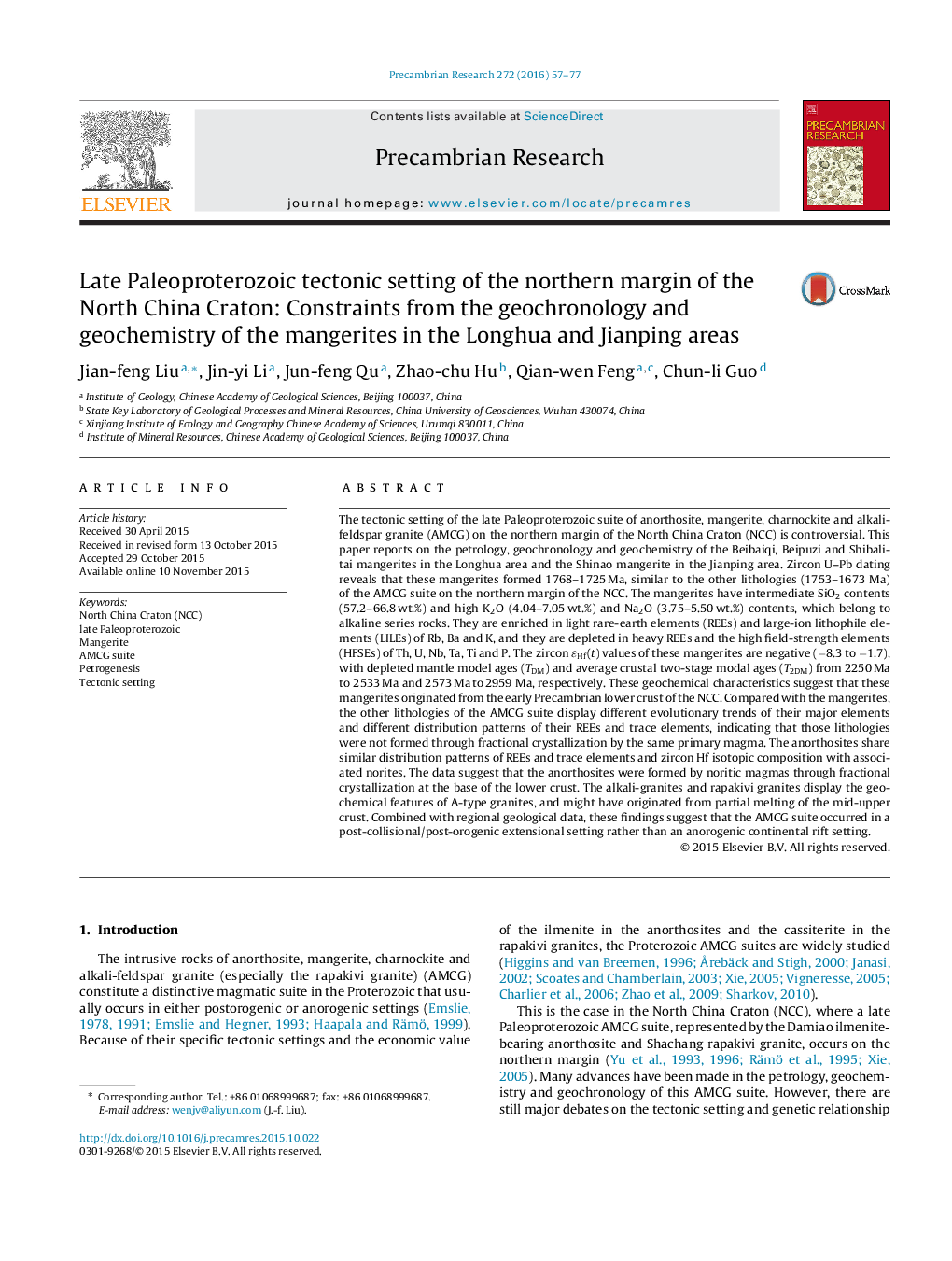| Article ID | Journal | Published Year | Pages | File Type |
|---|---|---|---|---|
| 4722436 | Precambrian Research | 2016 | 21 Pages |
•A few Paleoproterozoic mangerites are reported in the Longhua and Jianping areas.•The mangerites are integral parts of the Paleoproterozoic AMCG suite of the NCC.•Different lithologies in the AMCG suite originated from different sources.•The AMCG suite occurred in a post-collisional/post-orogenic extensional setting.
The tectonic setting of the late Paleoproterozoic suite of anorthosite, mangerite, charnockite and alkali-feldspar granite (AMCG) on the northern margin of the North China Craton (NCC) is controversial. This paper reports on the petrology, geochronology and geochemistry of the Beibaiqi, Beipuzi and Shibalitai mangerites in the Longhua area and the Shinao mangerite in the Jianping area. Zircon U–Pb dating reveals that these mangerites formed 1768–1725 Ma, similar to the other lithologies (1753–1673 Ma) of the AMCG suite on the northern margin of the NCC. The mangerites have intermediate SiO2 contents (57.2–66.8 wt.%) and high K2O (4.04–7.05 wt.%) and Na2O (3.75–5.50 wt.%) contents, which belong to alkaline series rocks. They are enriched in light rare-earth elements (REEs) and large-ion lithophile elements (LILEs) of Rb, Ba and K, and they are depleted in heavy REEs and the high field-strength elements (HFSEs) of Th, U, Nb, Ta, Ti and P. The zircon ɛHf(t) values of these mangerites are negative (−8.3 to −1.7), with depleted mantle model ages (TDM) and average crustal two-stage modal ages (T2DM) from 2250 Ma to 2533 Ma and 2573 Ma to 2959 Ma, respectively. These geochemical characteristics suggest that these mangerites originated from the early Precambrian lower crust of the NCC. Compared with the mangerites, the other lithologies of the AMCG suite display different evolutionary trends of their major elements and different distribution patterns of their REEs and trace elements, indicating that those lithologies were not formed through fractional crystallization by the same primary magma. The anorthosites share similar distribution patterns of REEs and trace elements and zircon Hf isotopic composition with associated norites. The data suggest that the anorthosites were formed by noritic magmas through fractional crystallization at the base of the lower crust. The alkali-granites and rapakivi granites display the geochemical features of A-type granites, and might have originated from partial melting of the mid-upper crust. Combined with regional geological data, these findings suggest that the AMCG suite occurred in a post-collisional/post-orogenic extensional setting rather than an anorogenic continental rift setting.
